Red Drum Fishing Report: Latest Updates and Catch Statistics
Overview of Red Drum Fishing Report
Fishing for red drum has remained strong in recent weeks with anglers reporting good catches of these hard-fighting fish from the South Atlantic and Gulf coasts. The red drum, also known as the redfish, is a popular sportfish that can be targeted with either natural or artificial baits. Red drum fishing is especially popular in the inshore waters of the southeastern United States, where these fish can be found feeding on a variety of prey species such as shrimp, crabs, and baitfish.
In terms of tactics, successful anglers are primarily targeting these fish in shallow waters using live or cut bait and artificial lures such as jigs or soft plastic baits. Sight fishing for red drum in clear shallows has become increasingly popular in recent years and can be an exciting way to target these fish. Anglers may also try fishing around structures such as jetties or oyster bars, where red drum are known to congregate.
Anglers are reminded to practice good catch and release techniques to ensure the continued sustainability of the red drum fishery. This includes using circle hooks, handling fish carefully and quickly, and releasing fish unharmed. Red drum are a crucial part of the ecosystem, and efforts to conserve this species are important to maintain healthy populations and ensure a thriving fishery for years to come.
Overall, the red drum fishing report is positive, and anglers can expect good opportunities to target these fish in the coming weeks. By using the right tactics and exercising responsible angling practices, anglers can enjoy a successful and sustainable red drum fishing experience.
Current Status
Red drum fishing is a popular activity for anglers who enjoy saltwater fishing. Red drum, also known as redfish or channel bass, are a member of the drum family and are a popular game fish in the southeastern United States. These fish are known for their reddish color and distinctive black spot near their tail. Over the years, red drum populations have fluctuated due to various factors, including overfishing, habitat loss, and changes in water quality. In recent years, there have been some positive changes in certain regions, but others have remained stagnant.
Improving Populations
In some regions, red drum populations have increased, thanks in part to conservation efforts and management measures. For example, in North Carolina, red drum populations appear to be stable, and the fishery is well-managed to ensure sustainable harvest. The North Carolina Division of Marine Fisheries has implemented size and bag limits, along with fishing seasons and closed areas, to help protect red drum populations.
Similarly, in other areas of the Southeast, red drum populations have improved in recent years. According to the Gulf States Marine Fisheries Commission, red drum populations in the Gulf of Mexico are at a sustainable level, thanks to strict management measures. These measures include size and bag limits, closed areas, and gear restrictions.
Stagnant Populations
Unfortunately, not all regions have seen the same positive changes in red drum populations. While some areas have implemented successful management measures, others have not. In South Carolina, for example, red drum populations have remained at low levels for several years. This is due in part to overfishing, as well as habitat loss and degradation.
In addition, some anglers continue to target and harvest red drum outside of the established regulations, which puts additional pressure on already vulnerable populations. Illegal harvesting of red drum can result in fines and other penalties, but enforcement can be difficult.
Taking Action
Overall, it is important for anglers, policymakers, and other stakeholders to take action to protect red drum populations. This includes following size and bag limits, avoiding closed areas, and using sustainable fishing practices. It also means advocating for stronger conservation measures and supporting organizations that work to protect these important fish. By working together, we can help ensure that red drum populations continue to thrive for generations to come.
Popular Red Drum Fishing Spots
Are you planning for your next red drum fishing trip? Well, choosing the right spot for fishing is just as important as having the right gear and technique. Here are some of the most popular red drum fishing spots that you should consider visiting:
Texas
Red drum fishing in Texas is known to be quite rewarding. The state boasts an extensive coastline that extends over 350 miles and offers innumerable hotspots for catching the redfish. Whether you prefer surf fishing, jetty fishing, or bay fishing, Texas has a lot to offer. Red drum fish can be found throughout the state’s coast, but some of the hotspot locations are the Redfish Bay, Aransas Pass, East Matagorda Bay, and Corpus Christi Bay.
Louisiana
When it comes to red drum fishing, Louisiana is one of the top destinations in the country. The fertile waters of Louisiana’s marshlands and estuaries provide an ideal habitat for redfish. The state also has plenty of charter boats that will take you to fishing hotspots such as Venice, Chauvin, and Leeville. The months of September and October are particularly good as the shrimp and baitfish become numerous in the waters, attracting more red drumfish for you to catch.
Florida
Florida is a true paradise for red drum fishing enthusiasts with various hotspots available throughout the state. The state’s warm climate and wide range of habitats lend themselves perfectly to supporting a large population of redfish. The best times to visit Florida for red drum fishing are from late August through November, but the fishing season runs all year round. Some of the top spots in Florida to catch red drumfish are Pensacola Bay, Indian River Lagoon, Sarasota Bay, and Charlotte Harbor.
Conclusion:
Overall, these are just a few of the most popular red drum fishing spots. There are many other hotspots available in other states like North Carolina, Alabama, Georgia, and Mississippi, among others. The best time to fish for red drum may vary depending on the location and the weather conditions, but the thrill of catching one is always rewarding.
Seasonal Trends
Red drum fishing is one of the most popular fishing activities among recreational anglers in the United States. This fish species is a favorite among many fishing enthusiasts due to its fantastic fight, high jumps, and its delicious taste. But, when is the best time to go red drum fishing? What are the seasonal trends that every fisherman should be aware of if they want to enjoy a successful and fulfilling fishing trip? In this article, we will explore everything you need to know about seasonal trends and peak seasons for red drum fishing.
The peak season for red drum fishing is typically from late August until mid-November. During this time, the waters are at their warmest, and the redfish are in abundance, making it the ideal time to reel them in. However, fishermen should note that the exact dates of the peak season may vary depending on the location, weather, and other factors.
Fall is the perfect time for red drum fishing, as the waters are cool, and the fish are active. During this time, the fish are actively feeding in preparation for the colder months ahead. Therefore, fishermen have higher chances of making a catch if they use live baits or artificial lures that mimic the fish’s natural prey.
Winter is also an excellent time for fishing as the waters are frigid, and the fish tend to concentrate more towards deeper water channels. During this time, fishermen have to adjust their fishing strategies to increase their chances of catching the fish. Since the fish are less active, fishermen should be patient and cast their lines deep into the water channels. The fishermen should also take into account the weather conditions and tides before they start fishing.
Springtime is a hit-or-miss season for red drum fishing since it can be affected by both warm and cold fronts. The season typically starts in March and extends until June. During this time, the weather is very unpredictable, and fishermen have to be flexible with their fishing strategies. However, when the conditions are perfect, the fish tend to come out in large numbers, making it the perfect time for anglers to reel them in.
Summer is generally the low season for red drum fishing since the temperatures are at their hottest. Anglers who fish during this time have to be very selective with their fishing spots since the fish tend to stick to the deeper parts of the waters where temperatures are cooler. Nighttime fishing can also be an effective strategy since the fish come closer to the surface during this time.
In conclusion, the best time for red drum fishing depends on the location, weather, and other factors. However, the peak season for red drum fishing is generally from late August to mid-November. Fishermen should also take into account the fish’s seasonal trends when choosing their fishing strategies to increase their odds of making a catch.
Top 5 Best Bait and Lures for Catching Red Drum
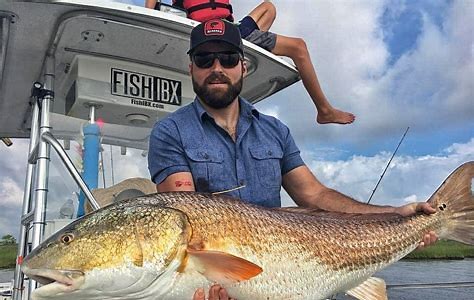
Red drum fishing is a popular activity among anglers, and with the right bait and lures, you can significantly increase your chances of landing a huge redfish. Here are the top 5 best bait and lures for catching red drum:
1. Live and Cut Bait
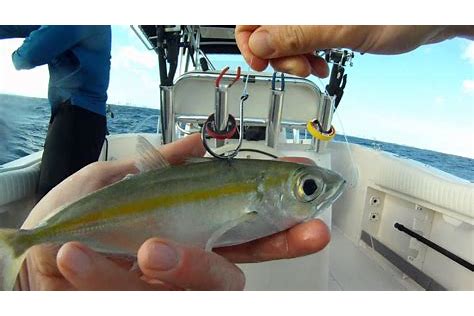
Live or cut bait such as mullet or shrimp are among the most popular and effective bait for catching red drum. These baits mimic the natural prey of red drum and attract them towards your hook. It is best to use live bait in shallow waters, while cut bait can be used in deeper waters.
2. Soft Plastic Lures
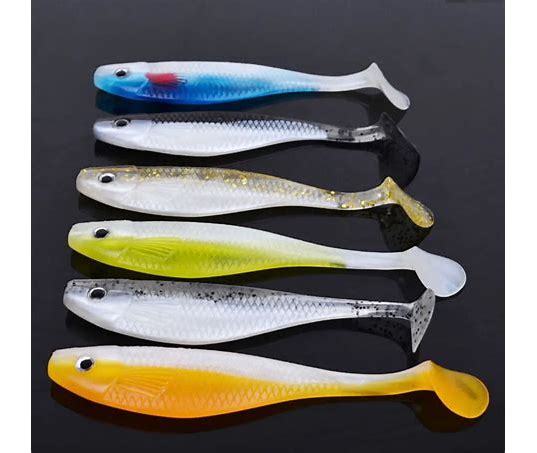
Soft plastic lures are among the best lures to use when fishing for red drum. These lures come in different shapes, sizes, and colors that imitate the natural prey of red drum. They are versatile and can be used in different fishing locations such as shallow waters, deep waters, and even in the surf.
3. Spinnerbaits
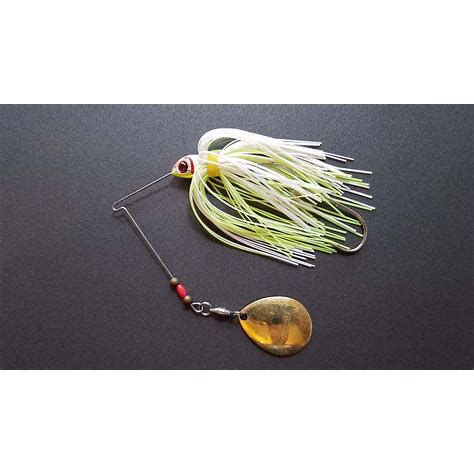
Spinnerbaits are an excellent choice for catching red drum in high winds or rough waters. These lures have a wire arm that rotates and makes a vibration in the water that attracts red drum towards your hook. It is best to use spinnerbaits early in the morning or late in the afternoon when the light is low.
4. Topwater Lures
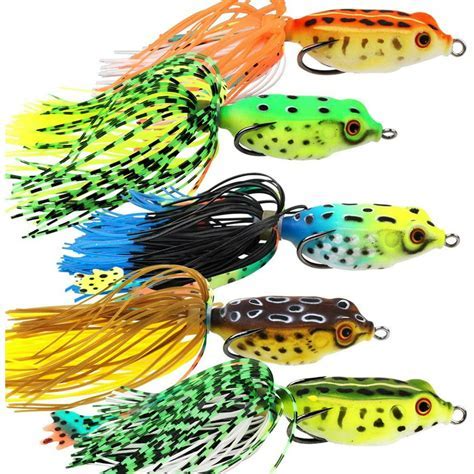
Topwater lures are ideal for catching red drum on the surface of the water. These lures create a lot of commotion on the water that attracts redfish towards your hook. It is best to use topwater lures in the early morning or late evening when the light is low.
5. Jigs

Jigs are great lures for catching red drum in deep waters or strong currents. These lures mimic the natural movements of baitfish, attracting red drum towards your hook. It is best to choose a jig that matches the size and color of the baitfish commonly found in the area you are fishing.
Using the right bait and lures can make a significant difference in your red drum fishing success. Make sure to choose the bait and lure that best suits your fishing conditions and techniques to improve your chances of catching huge redfish.
Regulations and Limits
Fishing enthusiasts who want to catch red drum should be aware that different states have varying fishing laws and regulations, which includes limits on the number and size of fish that they can catch. Knowing these regulations and limits is essential to avoid legal troubles or hefty fines.
It is highly recommended to check your local laws, as well as the regulations of the state or country that you plan to fish in. For instance, in some states, individuals need to secure a fishing license first before they can catch red drum. Moreover, fishing is only allowed during the specific months designated by the state’s fish and wildlife agencies.
In most states where red drum fishing is permitted, there is a size limit to prevent the catching of juvenile fish. Fishermen are only allowed to catch red drum fish that are 18-27 inches long, while larger fish are prohibited from being caught. In addition to the size limit, there is also a limit in terms of the number of red drum that fishermen can catch per day, per week, or per season. These rules are put in place to avoid overfishing and to sustain the population of red drum in the area.
Red drum fishing in Florida, for example, has its own set of regulations and limits. Florida offers the best red drum fishing on the Gulf Coast, but, unfortunately, Florida is also the most regulated state when it comes to fishing. The Florida Fish and Wildlife Conservation Commission has implemented rigorous rules and restrictions on red drum catches to ensure its sustainability and conserve the marine ecology.
Florida laws require that red drum are caught using hook and line, and they must be released immediately if caught using other methods. It is also prohibited to catch a red drum that is less than 18 inches or more than 27 inches. Fishermen can only catch one red drum per day, and they can not catch more than three red drum in a single day. These rules are strictly enforced, and violators will face severe legal consequences.
In Virginia, red drum fishing regulations are also enforced. Virginia fishermen are not allowed to catch red drum less than 18 inches or more than 26 inches. There is a daily limit of one red drum per angler, and the maximum possession limit is three. Individuals who engage in commercial fishing, on the other hand, are only allowed to catch eight red drum per day.
In conclusion, it is essential to be aware of the regulations and limits when fishing for red drum. Rules are put in place to preserve fish species and to prevent overfishing, which can cause great harm to the ecosystem. Fishing enthusiasts should check state and local laws to ensure their catch is legal, and they should follow the regulations set in place to protect the fish species and maintain a sustainable fishing habitat.
Tips and Tricks
Red drum fishing can be both a challenging and rewarding experience for anglers, whether you’re a seasoned pro or just starting in this sport. If you’re looking to reel in some of these prized game fish, then you need to know some basic tips and tricks to maximize your chances of success.
1. Master the Tidal Movements
One of the most critical aspects of red drum fishing is understanding tidal movements. Red drum tend to move into shallow waters during high tide to feed, while they swim deeper during low tide. This knowledge can help you figure out where to cast your line, depending on the tide’s stage.
2. Use the Right Fishing Gear
When it comes to red drum fishing, using the right gear is essential. You’ll need a sturdy rod and reel designed for saltwater fishing, a durable fishing line of at least 20-pound test, and the right bait and lures. Consider using live bait such as shrimp, crab, or mullet, or artificial lures like soft plastics, topwater plugs, or poppers, depending on the conditions and your fishing style.
3. Find the Right Spot to Fish
Red drum can be found in a variety of areas, including creeks, rivers, inlets, and shallow bays. However, not all spots are created equal, so it’s crucial to do some research and scouting to find the right fishing spot. Check online resources, ask local anglers, and pay close attention to water conditions such as temperature, clarity, and depth.
4. Consider the Time of Year
Red drum fishing can be good year-round, but the best time to fish for them depends on the season. Winter and early spring are typically the best times to target bigger fish, while the summer and fall offer excellent opportunities to catch large numbers of fish. Also, keep in mind that red drum fishing regulations can vary depending on the location and time of year, so be sure to check with local authorities before you go.
5. Patience is Key
Red drum fishing requires patience and persistence, as these fish can be quite elusive and choosy about their food. You may have to wait for some time before they decide to take your bait, so it’s essential to stay alert, focused, and ready to set the hook when you feel a bite. Don’t rush and keep trying different bait, lures, and techniques until you find what works best.
6. Practice Stealth When Approaching Schools of Fish
Red drum are schooling fish that can be spooky and sensitive to noise, making it crucial to approach them stealthily. Avoid making any loud noises, keep your movements slow and steady, and try to blend in with your surroundings. You may also want to use a polarized sunglass to reduce glare and improve your visibility in the water.
7. Respect the Fish and the Environment
Red drum fishing can be a fulfilling and enjoyable experience, but it’s also essential to treat the fish and the environment with respect. Make sure to follow fishing regulations and best practices, release any fish you’re not planning to eat, and dispose of trash in proper containers. Also, be aware of the impact of your fishing on the ecosystem and do your best to minimize it.
By following these basic tips and tricks, you’ll increase your odds of success when red drum fishing and have a better time on the water. Remember to always put safety first and enjoy the thrill and excitement that comes with catching these beautiful game fish!
Where to Go for Red Drum Fishing
Red drum fishing can be done in a variety of locations throughout the US, but some areas are more well-known for their abundance of the fish. One such area is the Gulf of Mexico, where red drum can be found year-round. Popular locations for Gulf of Mexico red drum fishing include Louisiana, Texas, and Florida. In Louisiana, the Calcasieu and Vermillion Bay areas are particularly productive. Florida’s Gulf Coast is also known for its red drum fishing, with areas such as Apalachee Bay and St. Joseph Bay offering great opportunities. Another popular location for red drum fishing is the Chesapeake Bay. The bay is home to one of the largest populations of red drum in the US, and anglers can usually find success from May through October. Some of the most productive areas are the Elizabeth River, Mobjack Bay, and the York River.
When planning a red drum fishing trip, it is important to research the regulations and rules for the specific area you will be fishing in. Each state and region has different regulations regarding the size and number of red drum you can catch, so it is important to stay informed to avoid any legal issues.
Additionally, it is important to use ethical practices when fishing for red drum. This means using proper gear and techniques to avoid unintentionally harming other wildlife, such as sea turtles or dolphins. It also means releasing any undersized or oversized red drum back into the water to ensure the sustainability of the population.
Understanding the specific trends and behaviors of red drum in your region can also increase your chances of success. Red drum tend to prefer shallow waters, and are often found near structures such as oyster beds, jetties, and bridges. They also tend to be more active during times of high tide, and are more likely to bite when the water is warmer.
Overall, red drum fishing can be a thrilling and rewarding experience for anglers of all levels. By researching the regulations, using ethical practices, and understanding the specific trends of the region you are fishing in, you can increase your chances of success and make the most of your time on the water.
 Fish Tank Facts Fish Tank Facts and About Aquarium
Fish Tank Facts Fish Tank Facts and About Aquarium